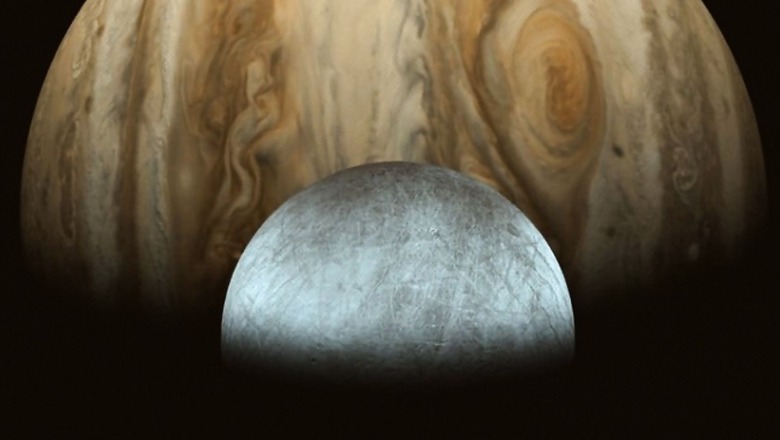
views
NASA’s Europa Clipper mission will launch on October 10, 2024, in a SpaceX Falcon Heavy rocket from the Kennedy Space Center in Florida. The spacecraft aims to travel to Jupiter’s moon, Europa. The goal of this mission is to explore the ability of the moon to host life by analysing its icy surface and the ocean thought to be located beneath it.
On its official X (formerly twitter) handle, NASA Europa Clipper wrote, “Our mission to explore Jupiter’s moon Europa remains on track, with a launch period opening on Octpber 10. We recently conducted extensive testing of our spacecraft’s transistors, and results suggest they’re ready to support our baseline mission.
Our mission to explore Jupiter's moon Europa remains on track, with a launch period opening on Oct. 10. We recently conducted extensive testing of our spacecraft's transistors, and results suggest they're ready to support our baseline mission. https://t.co/M4hClJroBB pic.twitter.com/GO8smWQpWx— NASA Europa Clipper (@EuropaClipper) August 28, 2024
According to NASA, “Europa Clipper’s main science goal is to determine whether there are places below the surface of Jupiter’s icy moon, Europa, that could support life.”
The mission has three main scientific objectives:
· Understanding the ice shell: Investigate more about Europa, from the form and structure of its icy crust, how thick it is and how it relates to the ocean beneath.
· Studying the ocean: Intrinsic description of the subsurface ocean in terms of its mass, depth and activity.
· Analysing composition and geology: Review the moon’s surface chemistry and morphology in search of potential signs of life.
As part of the baseline mission with the expected arrival at Jupiter in 2030, Europa Clipper spacecraft is set to conduct numerous close flybys of Europa, collecting detailed measurements to study the moon’s characteristics. As it orbits Jupiter, the spacecraft will execute nearly 50 flybys of Europa, reaching closest-approach altitudes as low as 25 kilometres above the surface. Each flyby will focus on a different location, allowing it to scan almost the entire moon.
According to NASA, Europa Clipper is the space agency’s largest spacecraft ever built for a planetary mission, featuring extensive solar arrays and radar antennas. These large solar arrays are designed to harness sufficient sunlight for the spacecraft’s power requirements while operating in the Jupiter system, which is over five times farther from the Sun than Earth. Standing at approximately 16 feet in height, the spacecraft measures more than 100 feet across when its arrays are fully deployed. It has a dry mass of 3,241 kg without any propellant in its tanks.
Europa Clipper has several science instruments:
· Europa Imaging System (EIS): It features a wide-angle and narrow-angle camera, both with eight-megapixel sensors, capturing high-resolution images to study geological activity and surface elevations.
· Europa Thermal Emission Imaging System (E-THEMIS): Utilising infrared light, E-THEMIS identifies warmer regions where liquid water might be present and analyses surface texture.
· Europa Ultraviolet Spectrograph (Europa-UVS): Collects ultraviolet light to determine atmospheric gas composition and search for plume activity.
· Mapping Imaging Spectrometer for Europa (MISE): Maps ices, salts, and organics to understand Europa’s geological history and potential habitability.
· Europa Clipper Magnetometer (ECM): Studies the magnetic field to confirm the existence of an ocean and measure its depth and salinity.
· Plasma Instrument for Magnetic Sounding (PIMS): Distinguishes magnetic field distortions to provide insights into Europa’s ocean.
· Gravity/Radio Science: Measures gravity variations during Europa’s orbit to reveal internal structure.
· Radar for Europa Assessment and Sounding: Ocean to Near-surface (REASON): Probes the icy shell for ocean reflections and analyses surface topography and composition.
· MAss Spectrometer for Planetary EXploration/Europa (MASPEX): Analyses gases in the atmosphere and plumes, studying the chemistry of the subsurface ocean.
· Surface Dust Analyzer (SUDA): Identifies the chemistry of materials ejected from Europa’s surface, offering clues about ocean salinity.



















Comments
0 comment